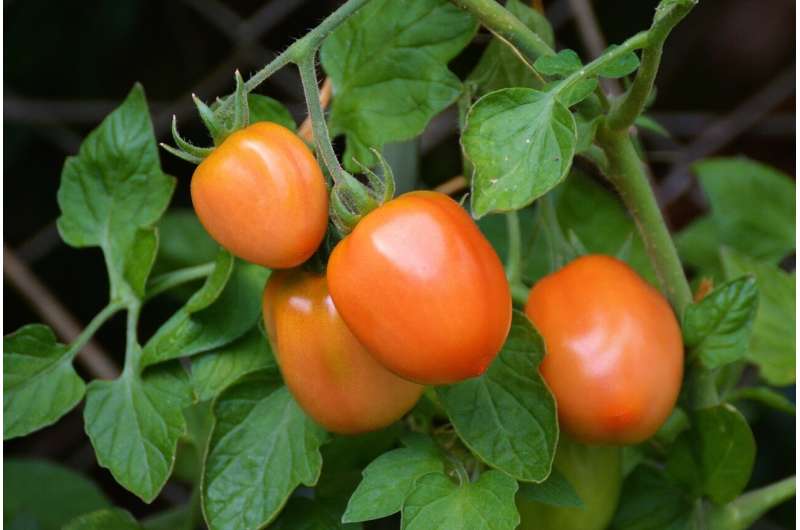Potential regional declines in species richness of tomato pollinators under climate

About 70% of the world's main crops depend on insect pollination. Climate change is already affecting the abundance and distribution of insects, which could cause geographical mismatches between crops and their pollinators. Crops that rely primarily on wild pollinators (e.g., crops that cannot be effectively pollinated by commercial colonies of honey bees) could be particularly in jeopardy.
However, limited information on plant-pollinator associations and pollinator distributions complicate the assessment of climate change impacts on specific crops. To study the potential impacts of climate change on pollination of a specific crop in North America, we use the case of open-field tomato crops, which rely on buzz pollinators (species that use vibration to release pollen, such as bumble bees) to increase their production. We aimed to (1) assess potential changes in buzz pollinator distribution and richness, and (2) evaluate the overlap between areas with high densities of tomato crops and high potential decrease in richness.
We used baseline (1961-1990) climate and future (2050s and 2080s) climatic projections in ecological niche models fitted with occurrences of wild bees, documented in the literature as pollinators of tomatoes, to estimate the baseline and future potential distribution of suitable climatic conditions of targeted species and to create maps of richness change across North America. We obtained reliable models for 15 species and found important potential decreases in the distribution of some pollinators (e.g., Lasioglossum pectorale and Augochlorella aurata).
We observed geographical discrepancies in the projected change in species richness across North America, detecting important declines in the eastern United States (up to 11 species decrease for 2050s). After overlapping the maps of species richness change with a tomato crop map for the United States, we found spatial correspondence between richness declines and areas with high concentration of tomato crops.
Disparities in the effects of climate change on the potential future distribution of different wild pollinators and geographical variation in richness highlight the importance of crop-specific studies. Our study also emphasizes the challenges of compiling and modeling crop-specific pollinator data and the need to improve our understanding of current distribution of pollinators and their community dynamics under climate change.
More information: Luis Carrasco et al, Potential regional declines in species richness of tomato pollinators in North America under climate change, Ecological Applications (2020). DOI: 10.1002/eap.2259
Journal information: Ecological Applications
Provided by University of Tennessee at Knoxville



















